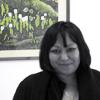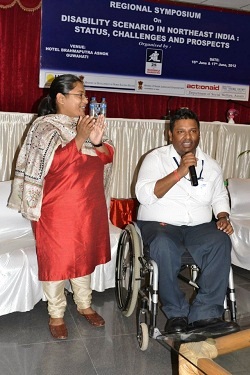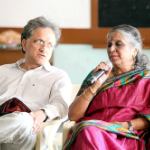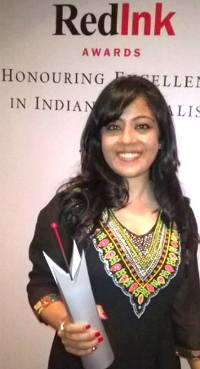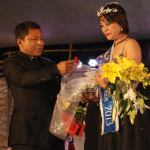In order to further my dream of combining Art, Education and Conservation at the grassroots, I initiated a Charitable Trust called the Himalayan Trust for Natural History Art (Memo No.12AA/CIT/ SLG/Tech./ 2010-2011/ 4800-82) in 2003 with seed funds gifted to me by Lady Lisa Sainsbury. The Trust is presently setting up the Himalayan Institute of Natural History Art in Kalimpong which has been running various hands-on workshops and classes in the field of Natural History Art.
The Trust now sponsors and looks after the art education of 14 talented underprivileged children between the age of 7 to 14 years from the local villages around Kalimpong. While they attend regular schools during the day, they visit the Art school in the evenings, weekends and every major holiday.
The beginning
On their first day at the ‘Art school’ (as the village folks now call it), I asked the new students if they attended regular schools. I came to know that they did and I sighed --- ‘Ok, that’s a silver lining’ only to have Pushpakala, the oldest student giving me quizzical looks. She said with a pinch of regret in her voice, ‘Miss, if there are too many chores around the house our parents tell us not to go to school!’
Also, these children had never touched colours in their lives nor were they aware of the art world. And to put the icing on the cake, their parents did not want them to learn ‘art’ and waste their precious time when they could be better off just helping around the house or earning a rupee or two by doing odd jobs. I knew I was up against a tough yet exciting challenge.
To begin with, I made some thumb rules that were simple and practical to follow for the children whilst also trying to gain the positive support of the parents and the village folks.
Thumb rule No. 1: 'This little art school expects you to leave all your worries and problems at the gate, don’t bring the baggage in. Rejoice in being here and just enjoy creating and having fun in the process. After class, we can discuss your problems and see if we can come up with solutions together.’
Thumb rule no.2: ‘I promise dear diary and sketchbooks to maintain you with respect and dedication.’
Thumb rule No. 3: ‘It is compulsory to complete all your regular school assignments, studies and other home chores before you can sit down with art.’ (This rule in fact was incorporated much later when I found out that the children had actually started to intentionally miss regular schools and home chores in order to be at the art school --- which was proof enough that they enjoyed being at the art school but we did not want any trouble from their regular schools and parents)!
___________________________________________________________________________
Learning from Nature
At the beginning of each new session, the children are presented with diaries and sketch books. It is mandatory for the children to create  field drawings and sketches and note down their observations and thoughts every day. They even carry them to their regular schools and work during lunch breaks and any free hours they get during the day. This routine has taught them the importance and value of time and of fulfilling their duties with dedication and sincerity.
field drawings and sketches and note down their observations and thoughts every day. They even carry them to their regular schools and work during lunch breaks and any free hours they get during the day. This routine has taught them the importance and value of time and of fulfilling their duties with dedication and sincerity.
Children are inquisitive, curious, open minded and natural researches and the diary allows them the freedom to ‘discover and learn’ by themselves. Many times I have come across observations and sketches that are very unique and insightful. An anecdote from my diary -- ‘Celestina Lepcha, came back from school all flushed with excitement. She told me that she had seen a giant bird on a Fig tree near her school. The very next day I could see all the children shouting with excitement outside the art school. Just as I came outside to see what the hulla-bulla was all about, I heard and saw a huge bird sweeping past the school building. It was the Great Indian Hornbill! It was a rare sighting and a treat for us all. Celestina told me later that this was the very kind she had observed on the Fig tree eating the fruits!’’ Documentation of such experiences and truth in the form of art and writing by children are prolific, fun and easy for even a layman to understand!’
The visiting tutors to the art school are all professionals in their own fields who share a common love and passion for the natural world. The children are taught how to make close observation of nature and document them in the form of sketches, paintings, doodles, words, maps, dance, poems, songs etc.using traditional techniques and methods. They are also taught how to beinnovative and versatile with their drawings and are encouraged to try different styles, techniques and mediums. Educational field trips form a vital part of the school curriculum. Besides art classes, we encourage different schools to visit us so that the children can interact and learn from each other bringing a sense of unity, sharing, communication, exchange of knowledge, ideas and friendship amongst them.
Their knowledge of the natural world and their surroundings come from the daily chores like cutting grass and collecting firewood from the forests. You ask them about ‘jungle medicines’ and they will give you a list for broken bones, headache, jaundice, fever, high blood pressure, diabetes etc! Ask them about the birds and insects and they know exactly where and how they live and what they eat. What we have added on to their knowledge is the power of closer observation through the classes.
Outcome
Four years down the line, they have metamorphosed into more responsible children, shown talent and dedication towards arts as well as their studies, and are much more cheerful than they used to be. This process has not only introduced them to the world of art and natural history but has also helped familiarize them to their surroundings, develop compassion for natural life, increase life skills and communication skills and has generated an awareness of the biodiversity around us. They have gained confidence and self-belief which I believe will help take them further in their life ventures.
Through these practices, I learned that each child is unique with his/her own unique qualities, talents, abilities and requirements and that one needs to be aware of and sensitive to their individual needs.I believe that providing options and opportunities whenever possible can help bring out the best in a child. Also, just as crucial to self discovery and learning is to provide opportunity to study those things that are significant and important to a child. This truly helps to motivate and kindle in them the zeal to learn.

